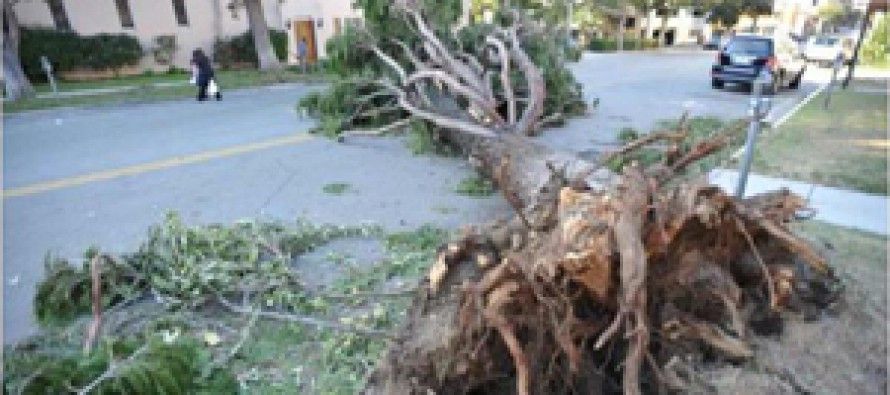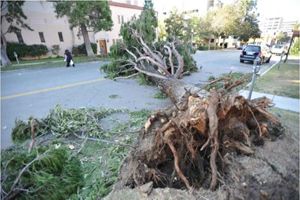Appeals court backs property rights

 Pasadena is known for its famous tree-lined streets. It now also may be known for the trees becoming the key in the first case in California to establish that a city’s urban forestry programs can be subject to “inverse condemnation” lawsuits filed by property owners.
Pasadena is known for its famous tree-lined streets. It now also may be known for the trees becoming the key in the first case in California to establish that a city’s urban forestry programs can be subject to “inverse condemnation” lawsuits filed by property owners.
The case concerned the windstorm that swept through Pasadena in Nov. 2011, toppling 5,500 street trees. The legal decision was handed down Aug. 21 by California’s Second District Court of Appeal in favor of Mercury Casualty Company. The insurance company was acting on a claim by James O’Halloran, to whom it paid $293,000 for damage a fallen tree did to his home.
Eminent domain is the taking of private land by the government for public purposes, such as building a school. The Fifth Amendment mandates that “just compensation” must be paid for “private property taken for public use.”
What if the government doesn’t pay a fair price for the taking? That’s where “inverse condemnation” comes in. According to USLegal.com, “Inverse condemnation actions are usually brought when the government has limited use of private land to an extent that the value of that land is greatly reduced, or where the government has allowed the public to make use of private land.”
Article I, Section 19, of the California Constitution also provides for inverse condemnation. It states private property “may be taken or damaged for a public use and only when just compensation…has first been paid to the…owner” (emphasis added).
But to prevail in an inverse condemnation action against the government, proof is required of deliberate governmental action. The action must serve a public purpose. And the government must fail to prove it was not negligent. Examples of governmental inverse condemnation liability are from flooding, sewage spills, the impairment of street access or noise from aircraft overhead flights.
In the case at hand, Pasadena insisted that no “inverse condemnation” case ever had involved a tree.
A key point in the matter was that Mercury didn’t file a routine nuisance lawsuit that might have been dismissed. Instead, it filed the inverse condemnation lawsuit.
Public purpose
The appeals court ruled that Pasadena’s urban forestry program was a government program that served a public purpose and thus was subject to inverse condemnation lawsuits.
It ruled that, based on facts brought forth in the trial in the lower Superior Court, the city of Pasadena “did not meet its burden of showing it had fulfilled its duty of care with respect to O’Halloran’s property” (see page 12). Specifically, mere pruning of street trees by the city was insufficient proof that it was not negligent in planting and allowing large trees to grow to such heights that they could topple in a 100-mile per hour windstorm.
The appeals court also thought it highly significant that Pasadena had an active “urban forestry” program operated by city personnel and relying on professional tree experts. Property owners are not allowed to prune or remove street trees. Thus, the city was not able to claim “contributory negligence” by property owners who should have cut down or pruned their own trees.
The decision is significant because it is a victory for property rights in a state that doesn’t always respect them. For example, earlier this year the First District Court of Appeal in the case Powell vs. County of Humboldt sided with the county against charges of the abuse of building permits.
Related Articles
Big Green Dries Out Big Valley
OCT. 1, 2010 By STEVEN GREENHUT When most people think of California, they think obviously enough about the populous and
What’s wrong with more opinions?
April 16, 2012 By John Seiler I don’t get cable TV. No way I’m paying $40 a month. So I’m
CalPERS’ divestment goals in crosshairs as coal stocks soar
SACRAMENTO – A newly released report from the California Public Employees’ Retirement System confirms that, fulfilling the Legislature’s directive to



